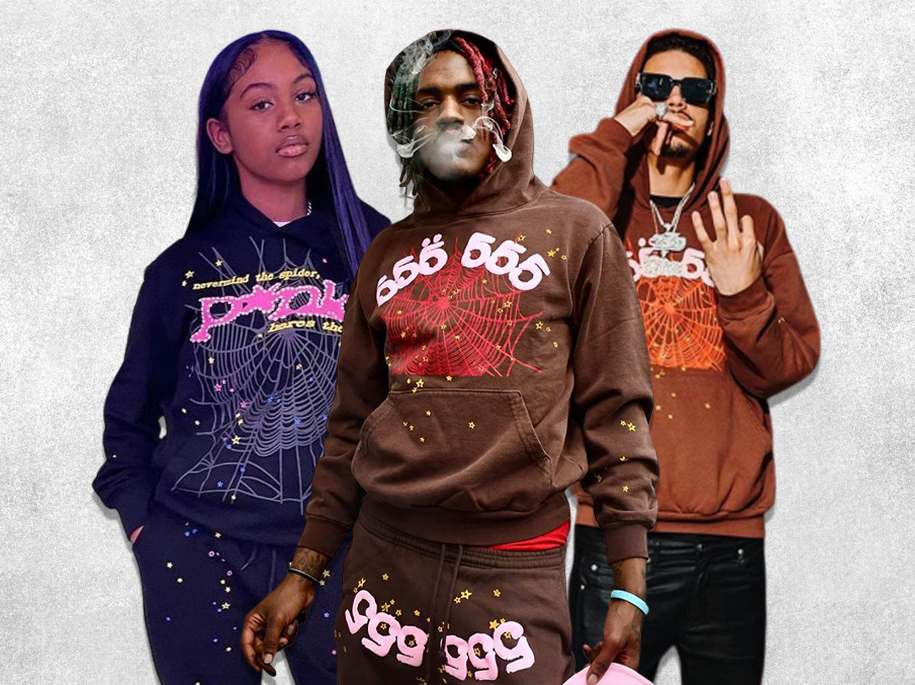Environmental Degradation: The True Cost of Fast Fashion
Fashion, an ever-evolving industry, enthralls us with its creativity, style, and innovation. Visit now Sp5der hoodie However, behind the glitz and glamour lies a darker reality—a reality of environmental degradation, unethical labor practices, and social injustices. In this comprehensive exploration, we delve deep into the shadows cast by fashion production, shedding light on the profound impacts it has on our planet and its people.
Textile Waste: A Mounting Crisis
Fast fashion, characterized by its rapid production and turnover of trendy clothing, is synonymous with excessive waste. Each year, billions of garments are churned out, only to end up in landfills shortly after. The proliferation of synthetic fibers exacerbates the problem, as these materials take centuries to decompose, polluting our land and waterways in the process.
Chemical Pollution: Poisoning Our Planet
The textile industry is one of the largest polluters globally, releasing a cocktail of toxic chemicals into the environment. From dyes and bleaches to finishing agents, the production process relies heavily on hazardous substances that contaminate soil, air, and water sources. This pollution not only harms ecosystems but also poses serious health risks to communities living in proximity to textile factories.
Resource Depletion: Draining Earth’s Finite Wealth
Fashion production is voracious in its consumption of natural resources, depleting water, energy, and raw materials at an alarming rate. Cotton, one of the most commonly used fibers, requires vast amounts of water for cultivation, leading to water scarcity in regions already facing droughts. Moreover, the extraction of fossil fuels for synthetic fibers contributes to climate change, further exacerbating environmental crises.
Human Rights Violations: Exploiting Vulnerable Workers
Sweatshops: Modern-Day Slavery
In pursuit of cheap labor and higher profit margins, fashion brands often turn a blind eye to the deplorable working conditions in their supply chains. Sweatshops, characterized by long hours, meager wages, and unsafe environments, exploit vulnerable workers, trapping them in a cycle of poverty and exploitation. Despite efforts to improve labor standards, millions of garment workers worldwide continue to endure exploitation and abuse.
Child Labor: Robbing Innocence for Profit
Tragically, child labor remains prevalent in many garment-producing countries, robbing children of their childhood and education. Forced into hazardous working conditions, these young workers are denied the opportunity to develop and thrive, perpetuating a cycle of poverty and inequality. Despite international conventions and legislation prohibiting child labor, enforcement remains lax, allowing this egregious practice to persist.
Gender Inequality: Disempowering Women in the Supply Chain
Women constitute the majority of the global garment workforce, yet they often face discrimination, harassment, and unequal pay. In many instances, women are relegated to the lowest-paid and least secure positions within the industry, perpetuating gender disparities and economic marginalization. Empowering women in the fashion supply chain is not only a matter of social justice but also essential for sustainable development and poverty alleviation. Check it now https://spiderofficial.us/sp5der-hoodie/
Towards Ethical Fashion: A Call to Action
Transparency and Accountability: Demanding Corporate Responsibility
As consumers, we hold the power to drive change within the fashion industry. By demanding transparency and accountability from brands, we can compel them to uphold ethical labor practices and environmental stewardship throughout their supply chains. Through initiatives such as the Fashion Revolution movement and sustainable fashion certifications, consumers are increasingly empowered to make informed choices and support brands committed to positive change.
Sustainable Practices: Redefining Fashion’s Footprint
Embracing sustainable practices is paramount to mitigating the environmental and social impacts of fashion production. From adopting eco-friendly materials and manufacturing processes to implementing. Fair labor practices and supporting artisanal craftsmanship. Brands can redefine fashion’s footprint and pave the way for a more equitable and regenerative industry. By prioritizing quality over quantity and longevity over disposability. We can foster a culture of mindful consumption and promote a more sustainable future for fashion.
Advocacy and Education: Amplifying Voices for Change
Beyond individual actions, advocacy and education play a crucial role in catalyzing systemic transformation within the fashion industry. By amplifying the voices of marginalized communities, advocating for policy reforms. And integrating sustainability into educational curricula. We can inspire future generations of fashion leaders to prioritize people and planet over profit. Together, we can reshape the narrative of fashion. Transforming it from a source of exploitation and environmental degradation to a beacon of innovation and social responsibility.
